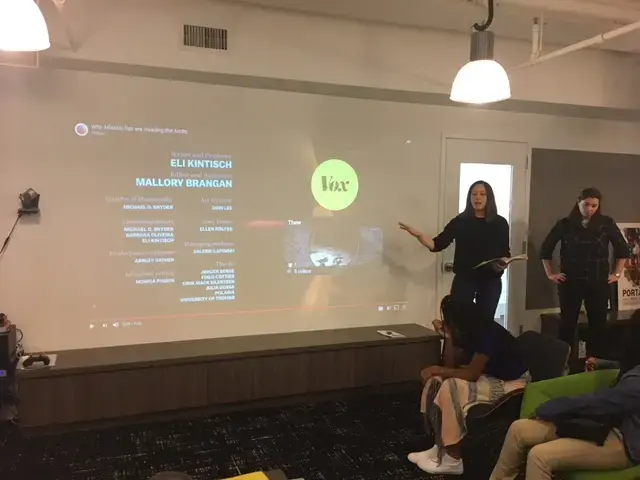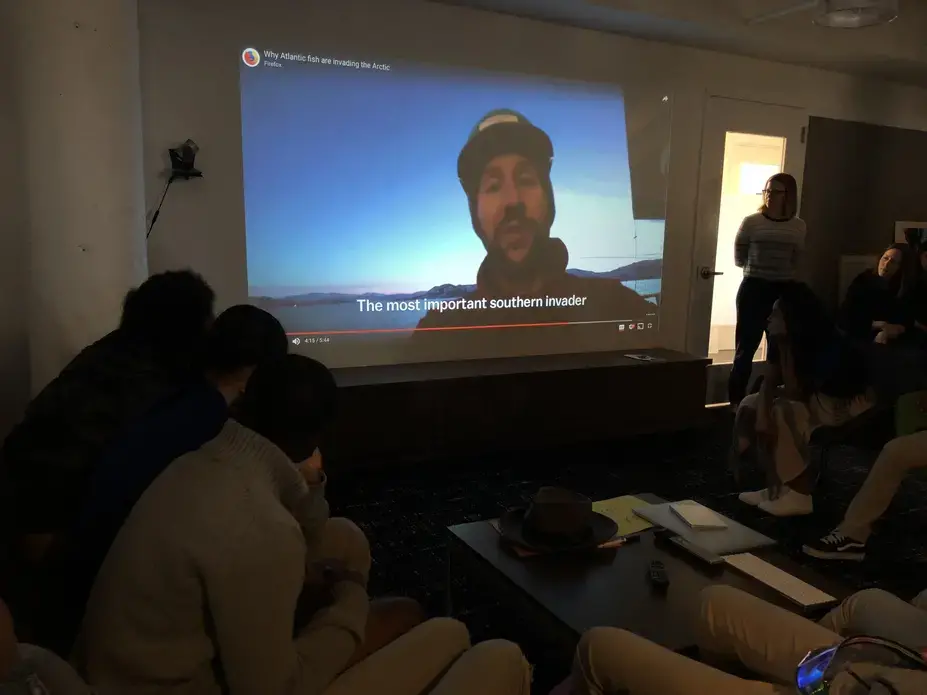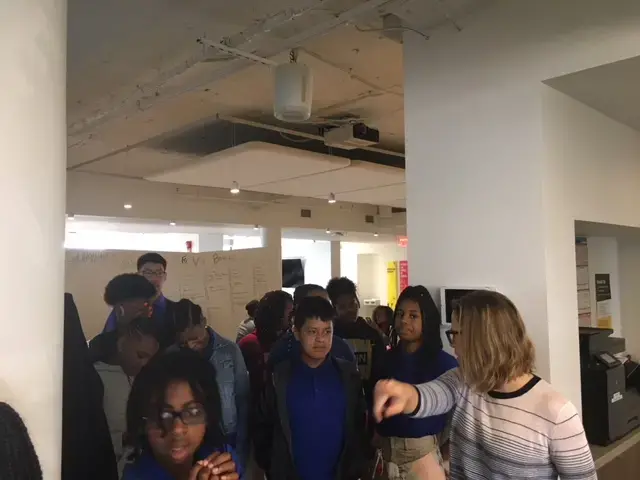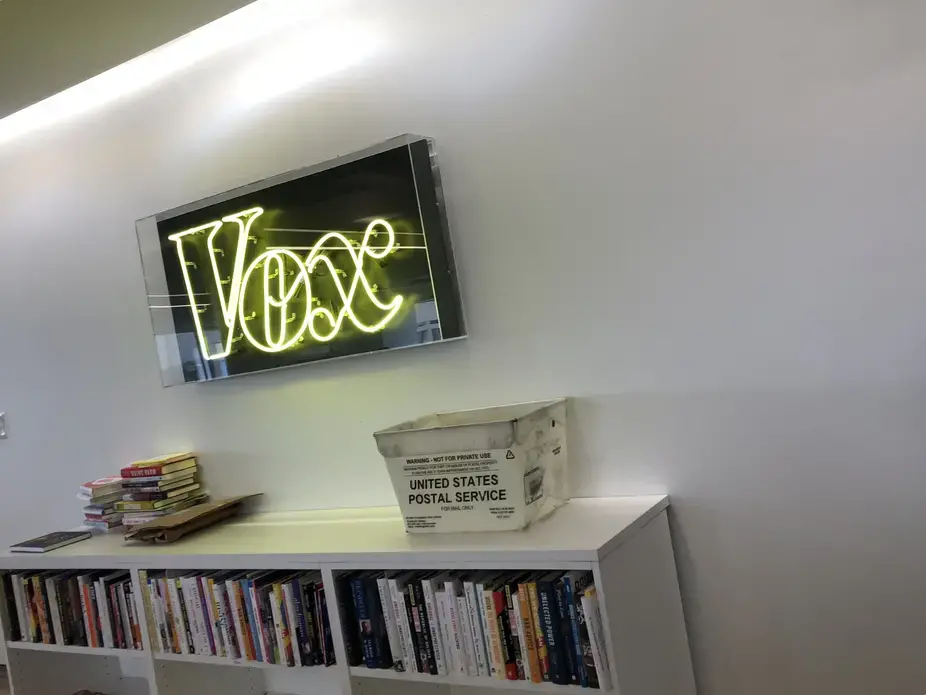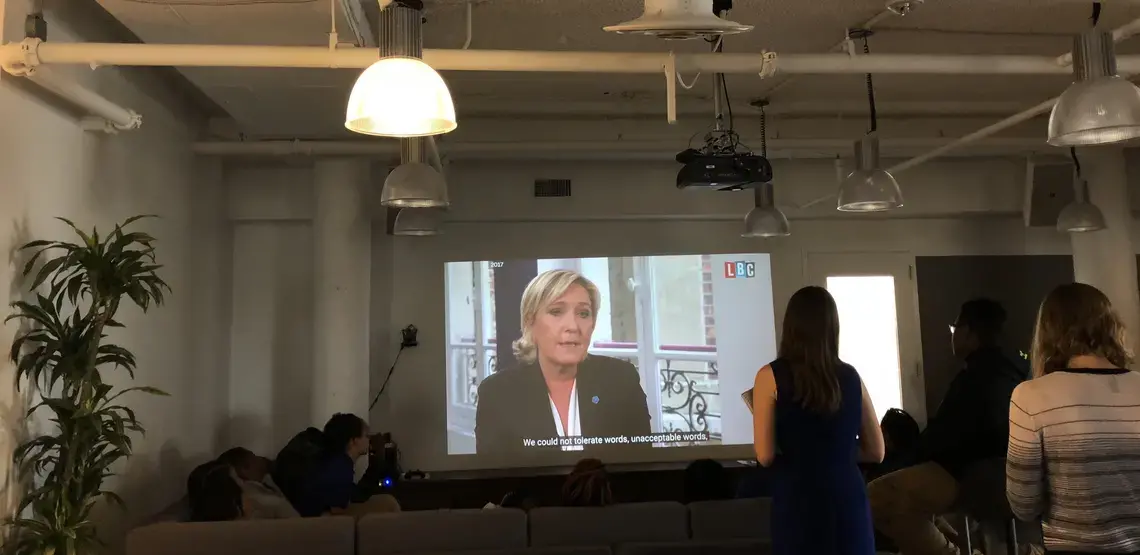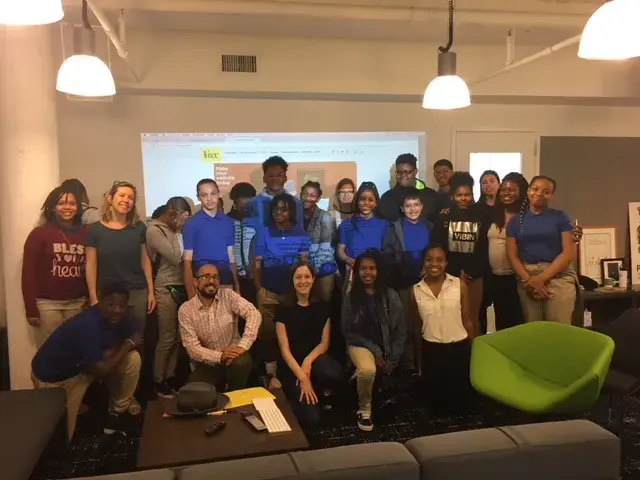
On Wednesday, June 6, 2018, 7th graders from Wheatley Education Campus in Washington, DC traveled to Vox’s Connecticut Avenue office to explore video production with animators, story editors, and producers. The visit included screenings of two Pulitzer Center-sponsored videos published by Vox. By analyzing the films and the visual decisions made in production, the students explored the question, “What makes a good story?”
During a pre-visit lesson, Pulitzer Center Senior Education Manager Fareed Mostoufi explained the logistical process that journalists might follow to tell an underreported story--buying a plane ticket, hiring a fixer, finding a translator. Students also examined how filmmakers for Vox use images, narration and interviews to create videos that inform and entertain audiences. This discussion of the journalism process led students to develop questions for the video journalists they would meet on their field trip, such as “How long does it take to edit a video?” and “What programs do you use to edit videos?”
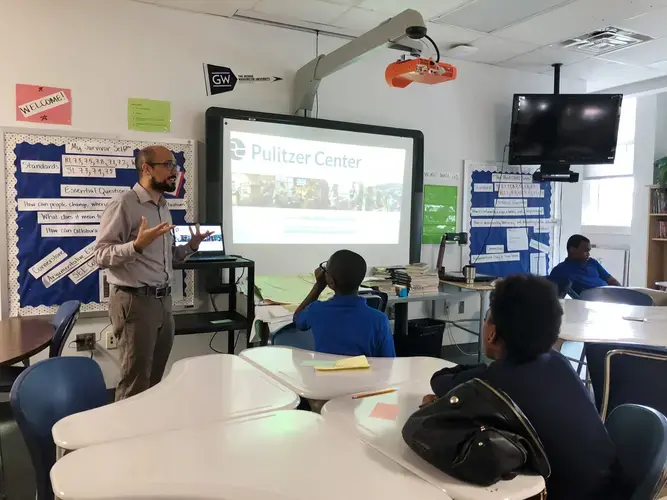
On their field trip to Vox, students started with a tour—getting a close view of the cereal bar that lined the walls of the open pantry and the rows of desks covered with books and equipment in the newsroom. Following the tour, students discussed two films with Eliza Barclay, Vox’s Health and Science Editor, Mallory Brangan, an editor and animator, Ellen Rolfes, a story editor, and Alexia Underwood, an associate editor.
The first film screened, “Why Atlantic Fish are Invading the Arctic” by grantee Eli Kintisch, is part of a three-part video project called “THAW: Into the Deep, Dark Arctic.” In it, Kintisch explores the effects of climate change on the Arctic and how rising temperatures are leading to an influx of invasive species and increase in extreme weather events across the globe.
Brangan, who worked as an editor and animator on the video, explained that rather than showing typical images of polar bears to visualize the Arctic, editors and animators presented a different approach to discussing climate change through animations and visuals of other species. The students then examined how the use of graphs, animations, and archival images help convey the impact of climate change on Arctic fish populations.
Ellen Rolfes, the video’s story editor, shared two critical lessons for students who want to effectively tell stories using this medium: First, videographers seeking to explain an event or the news should match the audio that audiences will hear to related visuals like maps, charts, or animations. Second, filmmakers should focus on the two or three main ideas that they want viewers to take-away after watching the video.
The second film screened, “Marine Le Pen: France’s Trump Is on the Rise” by Sarah Wildman, is part of the project “The French Election and Its Role in the Future of Europe.”In the video, Wildman describes the history of France’s National Front Party and likens the political campaign of French presidential candidate Marine Le Pen to that of Donald Trump. The students argued that the film, though centered on French politics, would interest an American audience because the filmmakers made a local connection through the comparison of Le Pen and Trump. The discussion led to a broader conversation about how to craft stories that engage and inform a broad audience.
So what does the Vox team think makes a good story? “Anyone can be a journalist as long as you have curiosity,” said Rolfes, emphasizing the importance of a good question as the foundation for storytelling. Brangan explained that students should focus on an issue that they are passionate about. Barclay said that the key to good storytelling could be described in one word: tension. She encouraged students to find and highlight the tension in the stories they seek to tell.
In a post-trip lesson led by Pulitzer Center education coordinator Hannah Berk, the students brainstormed ideas for stories with tension that they could tell through video about their school or local community. The students described the A-Roll that might be used in their videos--the audio that tells the story--such as interviews with students or audio from a speech. Then, they discussed B-Roll--the supplementary images, graphs, or archival footage that helps audiences understand the story.
By the end of the three-day workshop, students had gained the skills to analyze, plan, and execute independent videography projects. “From the Pulitzer pre-trip session to the actual field trip experience, everything was organized and worthwhile,” said Monica Martinez, English teacher at Wheatley Education Campus. “[The Pulitzer Center education team] pulled everything together, developed a lovely rapport with our 7th grade scholars, and opened their world to many facets of journalism! I'm sure they will not forget this experience at all.”
This field trip was supported by the DC Commission on the Arts and Humanities, which receives support from the National Endowment for the Arts. For more information on opportunities to connect students to underreported stories and the journalists who cover them, contact the Pulitzer Center education team by emailing [email protected].

The French elections are the next major test for gauging the global impact of populism, nativism and...






